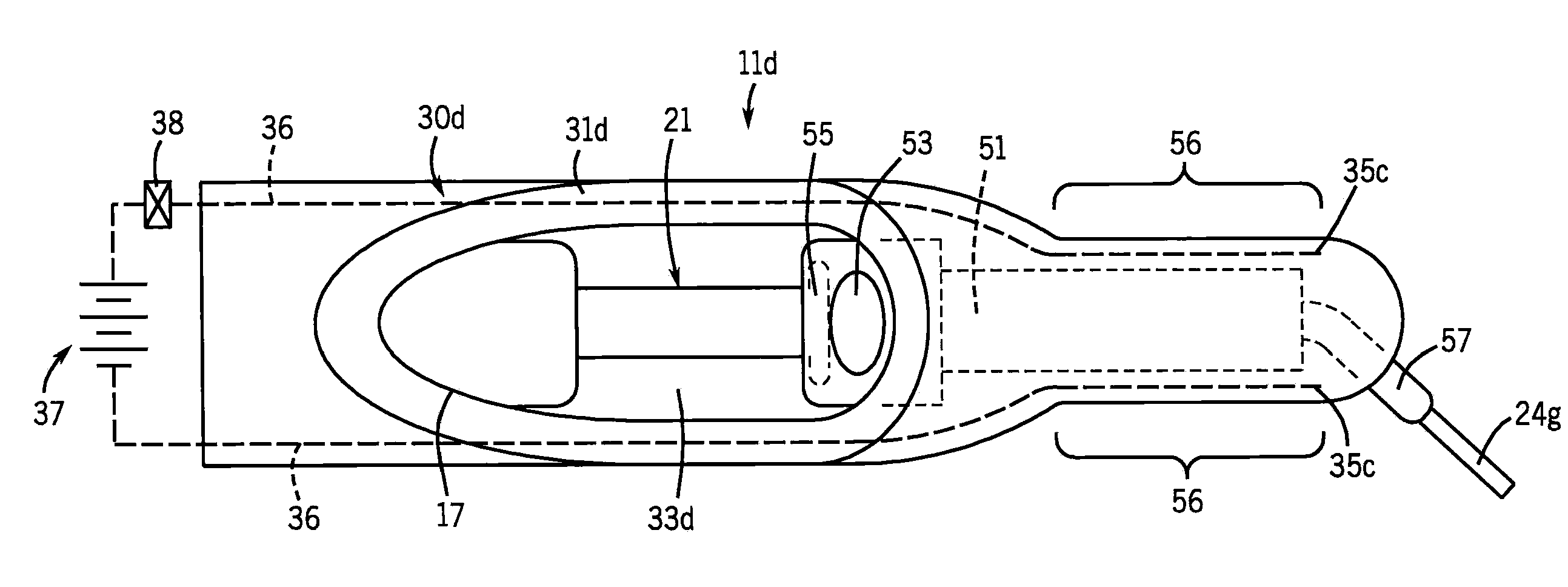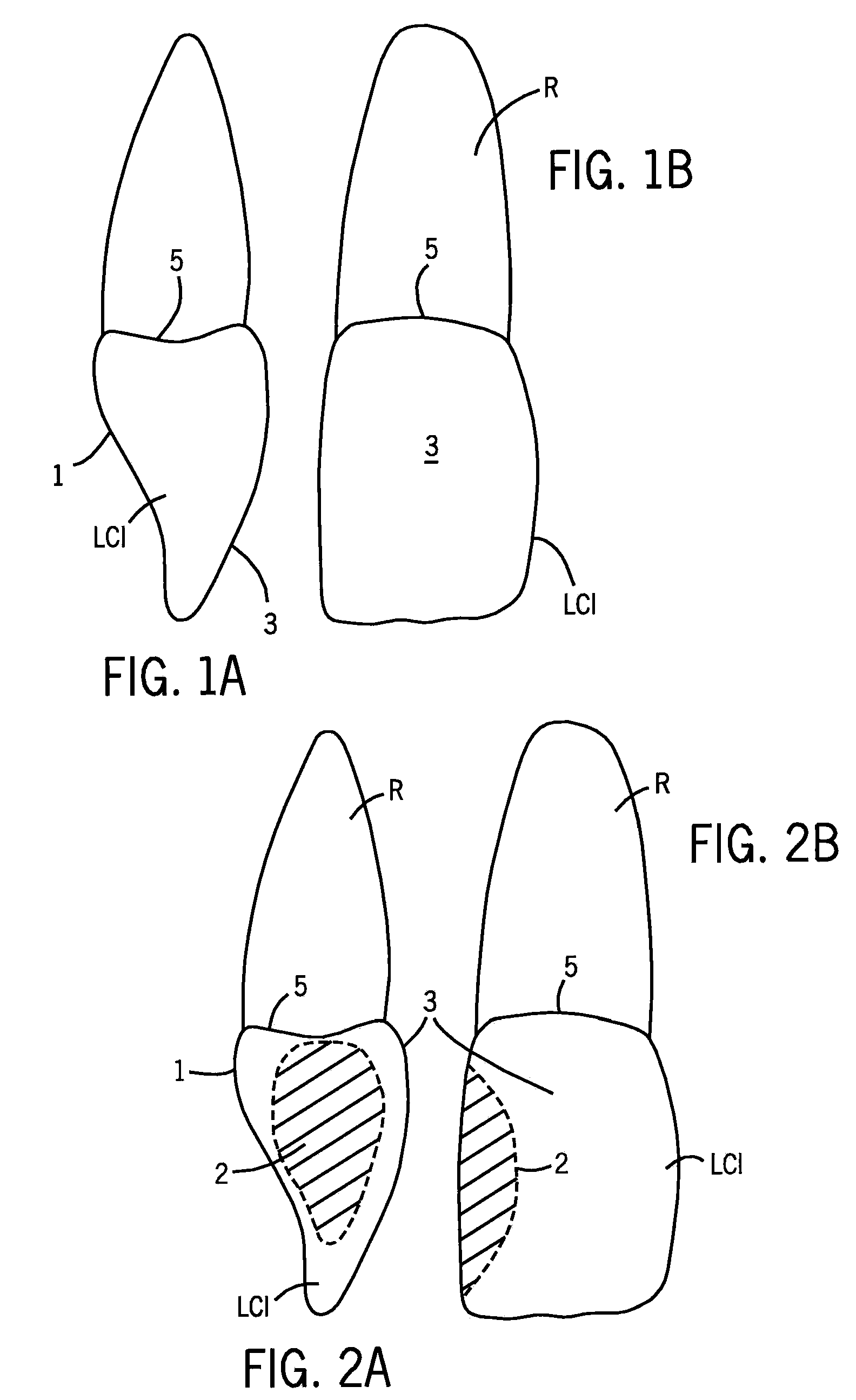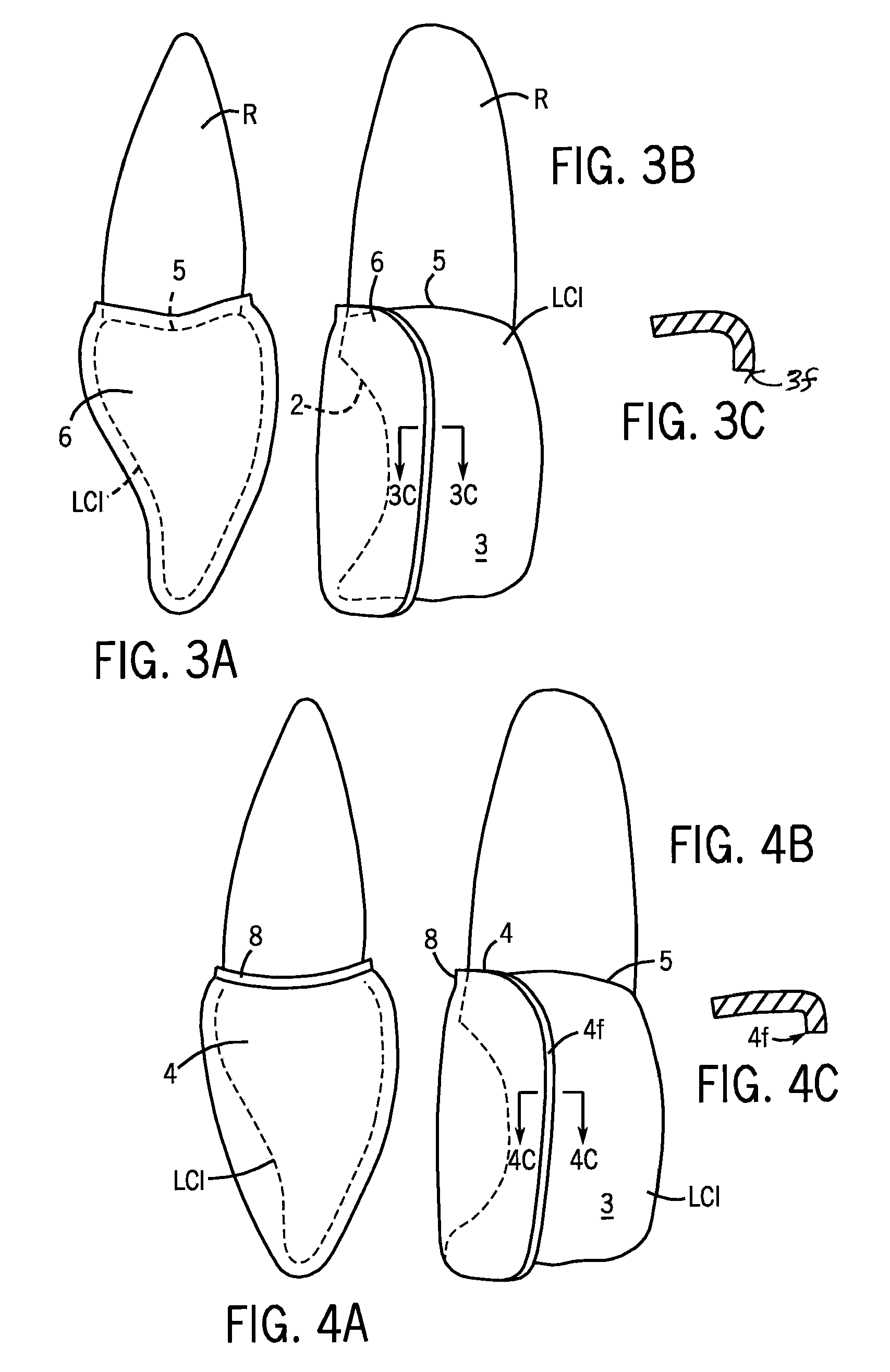Dental Matrix Devices Specific To Anterior Teeth, and Injection Molded Filling Techniques and Devices
a technology of injection molding and anterior teeth, which is applied in the field of dental matrix devices specific to anterior teeth, and injection molding filling techniques and devices, to achieve the effects of improving the shrinkage of flowable composites, reducing the viscosity of paste composites, and improving the handling and placemen
- Summary
- Abstract
- Description
- Claims
- Application Information
AI Technical Summary
Benefits of technology
Problems solved by technology
Method used
Image
Examples
Embodiment Construction
[0063]The invention provides improved methods, dental matrices, composite dispensers, and kits for the restoration of a decayed portion of an anterior tooth.
[0064]In an example method according to the invention for the restoration of a tooth, the dentist locates a tooth having a cavity. A hollow cavity preparation is prepared in a tooth. The tools and techniques for forming the hollow cavity preparation are well known in the art and therefore will not be explained further.
[0065]In order to properly deposit the restorative material on the side of the tooth without undesired leaking of the restorative material beyond the side of the tooth, the dentist places a dental matrix around at least a portion of the tooth. In the invention, a sectional anatomic translucent dental matrix is placed on the tooth. When the matrix is placed around at least a portion of the tooth, the matrix acts as a form for the desired shape of the restored tooth.
[0066]The cavity preparation in the tooth is then e...
PUM
 Login to View More
Login to View More Abstract
Description
Claims
Application Information
 Login to View More
Login to View More - R&D
- Intellectual Property
- Life Sciences
- Materials
- Tech Scout
- Unparalleled Data Quality
- Higher Quality Content
- 60% Fewer Hallucinations
Browse by: Latest US Patents, China's latest patents, Technical Efficacy Thesaurus, Application Domain, Technology Topic, Popular Technical Reports.
© 2025 PatSnap. All rights reserved.Legal|Privacy policy|Modern Slavery Act Transparency Statement|Sitemap|About US| Contact US: help@patsnap.com



